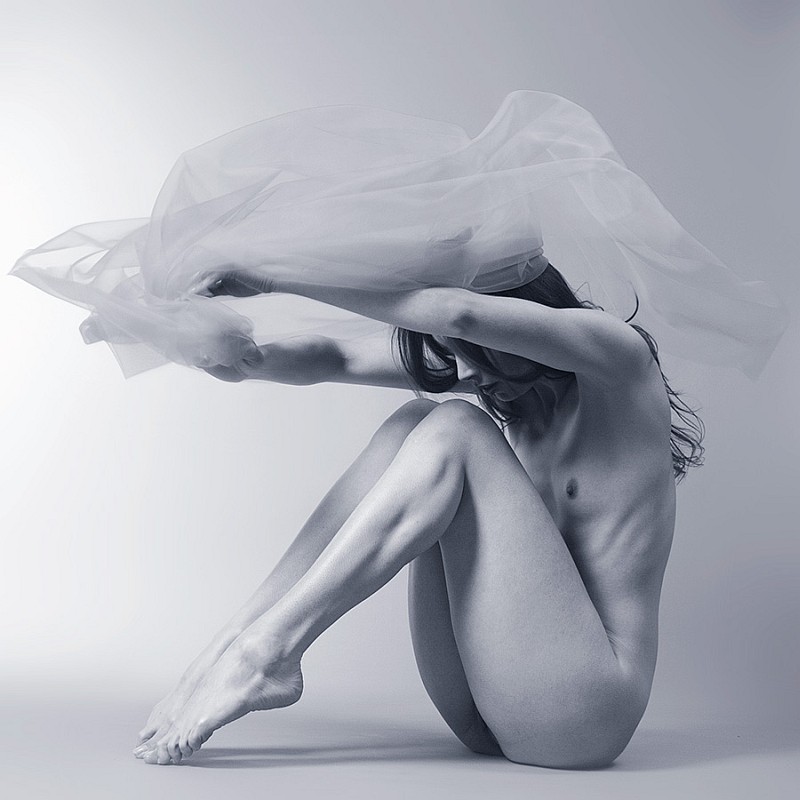Pierre Fudarylí
Gracias a la sugerencia y amabilidad de Pierre, reedito éste post para incluir una entrevista que nos ayude a conocer un poco más a éste interesantísimo artista mexicano.
Because the suggestion and kindness of Pierre, reissued this post to include an interview to help us know a little bit more this very interesting mexican artist. Text of the interview in english at the end of this post.
Pierre frente a sus trabajos "La historia de Caos y Nix..." y "Lilith
Pierre Fudarylí es un artista mexicano nacido en noviembre de 1984 en la ciudad de Cancún, Quintana Roo.
Siempre está experimentando con diferentes técnicas artísticas, con incursiones en la escultura, instalación, fotografía, video, pero con mayor énfasis en la pintura (acrílico, pastel y tinta) y fotomanipulación con software de diseño, tanto 2D como 3D.
Desde una edad muy temprana desarrolló interés en las artes visuales, estudiando independientemente a los grandes maestros de la pintura. A los 11 años intentó tomar clases de pintura, pero abandonó porque no tenía libertad para desarrollar libremente su intelecto, sometido a los prejuicios de un profesor mediocre.
A los 12 años, en un artículo de una revista, encontró al pintor que sería una de sus mayores influencias: Salvador Dalí
El "Corpus Hypercubus" y "Carne de Gallina Inaugural" [ver al final del post] abrieron nuevos horizontes en la mente de Fudaryli, quien más tarde conoció a
Remedios Varo,
Max Ernst,
Chirico y el resto de las personalidades del movimiento surrealista quienes, a diferencia de
Caravaggio y
Boticcelli, presentaban una realidad distorsionada por la imaginación y el absurdo que, para Pierre, representan el verdadero valor de una obra y su creador.
"Moiras, The Three Fates (Moiras, Las Parcas)" © Pierre Fudarylí
"Animal Playground 6 (Patio de animales 6)" © Pierre Fudarylí
Proyecto "El porno está en el ojo del que mira" (Projecto "Porn is in the eye of the beholder")
El Hurgador: Cuentas que naciste en Cancún, que todo el mundo asocia con el turismo... ¿cómo era el entorno artístico en tu infancia? ¿qué te mueve a inclinarte hacia las artes?
Pierre Fudarylí: En Cancún viví realmente muy poco tiempo, lo cual no representa alguna influencia dentro de mi obra e inclinación por las artes.
Más tiene que ver el entorno familiar y la cercanía con la literatura por medio de los libros de mi padre y la luz que vio mi madre en mi desde pequeño, el apoyo incondicional de ambos y su guía fue lo que me alentó a pensar por mi mismo desde pequeño e ir forjando el habito de dibujar.
EH: ¿Qué te llevó a escoger la arquitectura en vez de dedicarte directamente a estudiar Bellas Artes, por ejemplo?
PF: Principalmente la idea de que un artista muere de hambre antes de cotizarse suficientemente bien para vivir sin problema.
La segunda razón es que en las escuelas te enseñan a pensar como piensa el maestro (cuando menos aquí en México así es) la tercera razón es que son cosas muy afines y complementarias, muchas veces basadas en principios iguales.
"Cromofilia (Chromaphilia)" © Pierre Fudarylí
Cromofilia (afinidad al color)
El proyecto presenta la sensualidad intrínseca a la anatomía femenina, sus formas y pliegues, voluptuosidades y contorsiones acentuados por su afinidad a cada sentimiento representado en color.
Chromaphilia presenta a la mujer tal cual es, con una anatomía real cruzando los bordes del estereotipo de "modelo" que ha impuesto Hollywood y sus películas; el cuerpo femenino es perfecto y erótico en la forma que se vea... sus imperfecciones son las que las hacen perfectas, únicas y maravillosas
Izq. "Altar" / Der. "Contemplación (Contemplation)" © Pierre Fudarylí
"Tratar de comprender el arte es simplemente intentar alimentar el ego para así tener un tema de conversación en la mesa de un café frente a otro pseudointelectual o alguien que quiera reconocer que tú sabes mucho sobre arte."
"Flores para Frida (Flowers to Frida)", set 2 © Pierre Fudarylí
EH: Tienes una predilección especial por la temática femenina, sin embargo las mujeres de tus trabajos suelen aparecer con el rostro oculto o distorsionado. En la selección que hice aquí, por pura casualidad, supongo, sólo en "Ænema" se ve un rostro completo, pero tampoco recuerdo muchos en el resto. ¿A qué se debe?
PF: La censura se debe en parte a la cultura en la que vivo, en parte al propio acuerdo que tengo con las personas que colaboran conmigo pero más allá de eso el despersonalizar un cuerpo hace que cada quien pueda vivir la historia que se cuenta poniéndole su propia cara.
"Lasciate ogni speranza, voi ch'entrate (Abandonad toda esperanza los que entran)
[All hope abandon, ye who enter in]"
9º de la serie (9th of the series) "errare humanum est, sed perseverare diabolicum" © Pierre Fudarylí
"Ænema" © Pierre Fudarylí
“No se debe racionalizar lo irracional, el estrecho puente entre la maravilla y el miedo es lo que genera la sorpresa visceral entre el arte y el espectador.”
"Lilith" © Pierre Fudarylí
Pierre Fudarylí es a Mexican artist born in November, 1984 in the city of Cancún Quintana Roo.
He is always experimenting with different art techniques, with incursions into sculpture, installation, photography, video, but with more development in the paint (acrylic, pastel and ink) and photomanipulation with design software, both 2D and 3D.
From a very young age, he raises his interest in the visual arts, studying independently from the great masters of painting. At age 11 attempts to take painting classes, but leaves the company because there was not freedom to develop a free intellect, as he was subjected to the prejudice of a mediocre teacher.
At age 12 in a magazine article he found the painter who would be one of his major influences, Salvador Dalí.
The "Corpus Hipercubicus" and "Carne de gallina inaugural” [check at the end of this post] opened new horizons in the mind of Fudarylí, who later knew of Remedios Varo, Max Ernst, Chirico and the rest of the surrealist movement personalities, who unlike Caravaggio and Botticelli, present a distorted reality for the imagination and the absurd, that, for Pierre, represent the true value of a work and its creator.
"Terribilis est locus iste et porta coeli (Éste lugar es maravilloso, las puertas del cielo)
[This is a Place of Awe, The Gate of Heaven]" © Pierre Fudarylí
"Memento mori (Recuerda que eres mortal) [Remember that you must die]"
16º de la serie (16th of the series) "errare humanum est, sed perseverare diabolicum" © Pierre Fudarylí
EH: Yo también vengo de un país americano (Uruguay). Allí, por ejemplo, ha habido tradicionalmente un tratamiento bastante pacato del desnudo, que ha llegado hace no muchos años a la censura abierta de muestras donde aparecían cuerpos sin ropas o en actitudes "incómodas". ¿Cómo te ha tratado México en éste sentido?
PF: En la ciudad donde vivo, Chihuahua, México, me di cuenta de que a raíz de que hago mi trabajo sin miedos de expresarme o experimentar sobre el tema del desnudo mucha gente lo va aceptando más y lo ven como lo que es, arte. Incluso se desencadenó una oleada de personas que comenzaron a quitarse el miedo a experimentar sobre el tema de cualquier lado de la moneda, del lado del fotógrafo o del modelo.
nunca me han censurado o cerrado las puertas, al contrario siempre he recibido apoyo tanto de la universidad donde estudié como de la Universidad Autónoma del Estado, así como de diversos espacios particulares con los cuales estoy muy agradecido.
"La historia de Caos y Nix y la creación de la noche (The tale of Chaos and Nix and the Creation of Night)"
© Pierre Fudarylí
Izq. y Der. "Chromaphilia" © Pierre Fudarylí
"Trying to understand art is simply trying to feed the ego so you can have a topic of conversation in a coffee house table in front of another pseudo-intellectual or someone you want to acknowledge that you know a lot about art."
"Vicarious", acuarela, pastel, tinta china y carboncillo sobre papel, 22 x 57 cm. © Pierre Fudarylí
EH: La temática religiosa está muy presente en tu trabajo; a veces en una puesta en escena abiertamente desafiante (como los desnudos en las iglesias) y en otras, como en la serie "errare humanum est...", con un carácter más "interpretativo", por así decirlo. ¿Cómo es tu relación personal con la religión?
PF: Mi relación con la religión, presente en la mayoría de mi obra es extraña, ya que yo no practico ninguna religión por convicción, sin embargo crecí en un medio donde la mayoría de las personas profesan el catolicismo, estudié en escuelas religiosas en primaria y preparatoria y el arte sacro me parece de las cosas que jamás deberían perderse, no por la carga connotativa sino por la obra misma, la mayoría de las pinturas y espacios religiosos son grandes obras de la humanidad hablando de cualquier religión.
En lo personal me parecen asombrosas muchas de las narraciones de la Biblia, el Bhagavad-guitá y lo poco que he leído sobre el Corán, siempre hacen que me imagine muchas historias, porque para mí no son más que cuentos inventados por los hombres, así que busco ilustrar a mi manera esos cuentos....ya sea criticando las ironías o absurdos descritos o meramente representando sus pasajes.
EH: Además de los clásicos surrealistas que mencionas como referentes que de alguna manera dirigieron tus pasos artísticos, ¿qué artistas actuales te resultan interesantes, por ejemplo en pintura, fotografía y arte digital, ya que tu trabajo es tan variado en cuanto a estilos y técnicas?
PF: En cuanto a influencias hay un artista llamado Cédric Magnin que un día me dijo --"Influences are very important but they become healthy when you forgot them." [las influencias son importantes, pero cuando resultan saludables es cuando las olvidas] esto marcó fuertemente mi separación del formalismo Daliniano, aunque conservo algo de su referencia con significados propios.
Los artistas que más admiro y los cuales se vuelven de cierta manera parte de mi obra son:
Max Sauco,
Gottfried Helnwein,
Dino Valls,
Saturno Buttò,
Peter Gric,
Alex Grey,
Arturo Rivera,
Siegfried Zademack,
Anja Millen,
Christian Martin Weiss,
Héctor Pineda,
Santiago Caruso,
Karina Marandjian, hay tantos que no podría terminar de mencionarlos a todos, por otro lado mucho de mi trabajo está inspirado en la musica, así que las referencias también serían necesarias, bandas como Tool, Pink Floyd, Nick Cave y Mars Volta están presentes casi siempre al momento creativo.
"Delta entrópica" - Izq. Obra / Der. Detalle © Pierre Fudarylí
EH: Te declaras enemigo de la racionalización, de la búsqueda de significados y explicaciones que rompan la mística de la relación obra-espectador. Sin embargo tus obras parecen llenas de claves y significados ocultos que parecen buscar ser abordados, descubiertos; símbolos, la propia interpretación religiosa... ¿cómo es posible lo uno sin lo otro?
PF: Me declaro en contra del arte conceptual cuando éste no tiene un valor en si mismo como pieza estética, cuando un concepto es más poderoso que una obra de arte entonces pienso que deberían ser escritores, no artistas plásticos.
Considero que hay dos pasos para apreciar una obra de arte, el primero consiste en la experiencia de observarla y sentirla, ésto es lo más importante, una vez que la pieza te haya causado una reacción visceral cualquiera que ésta sea podrás pasar al siguiente nivel, el cual se convierte en un nivel intelectual, pensar en qué quiso decir el artista.
En mi caso no me gusta explicar mi obra, sin embargo con los títulos invito a la gente a investigar acerca del tema y así tener una segunda experiencia al leer y comprender el cuadro.
Hay experimentos que realizo donde simplemente busco el valor estético de la pieza en sí, por lo regular en las fotografías que no son intervenidas o transformadas.
"Dragonfly" © Pierre Fudarylí
EH: ¿Hacia dónde se dirige tu interés en éste momento, con miras a futuras creaciones? ¿Hay alguna nueva serie temática en la que estés trabajando o que quisieras abordar?
PF: Actualmente estoy desarrollando una serie sobre personajes mitológicos, de todas las mitologías de las cuales me pueda informar, desde los sumerios hasta los mayas, desde los rusos o beduinos hasta los rarámuris o incas.
Izq. "World Wide Web" / Der. "La Nausée (La Náusea)" © Pierre Fudarylí
“Do not rationalize the irrational; the narrow bridge between the wonder and fear is what creates the visceral shock between art and spectator.”
"Dolor (Pain)", técnica mixta sobre papel. © Pierre Fudarylí
EH: Por último, comenta sobre tí mismo, lo que quieras, que te parezca pueda interesar a quien se interese por tu trabajo.
PF: Todos somos el producto de las cosas que nos rodean, la cosmovisión temporal, onírica y geográfica, no hay nada nuevo, sólo interpretaciones personales de algo que comprendemos distinto.
El plano de los sueños te conduce a la improbabilidad de las cosas y si es improbable me suena a reto, por lo general me gustan los retos.
"Sin título (Untitled)" © Pierre Fudarylí
Los textos complementarios están traducidos de los que aporta Pierre en sus espacios de
tumblr y
deviantART.
Se puede disfrutar del trabajo de éste artista, además de en los sitios antes mencionados en su
facebook.
"Auri Sacra Fames (Detestable hambre de oro) [Detestable Hunger for Gold]"
2º de la serie (2nd of the series) "errare humanum est, sed perseverare diabolicum" © Pierre Fudarylí
Imágenes publicadas con permiso del artista (¡Muchas gracias, Pierre!)
Images published here with artist's permission (Thanks a lot, Pierre!)
![]() Salvador Dalí
Salvador Dalí"Crucifixion (Corpus Hypercubus)", óleo sobre lienzo, 194,3 x 123,8 cm., 1954.
Metropolitan Museum, New York
En el cuadro aparece Cristo con un cuerpo atlético y en tensión levitando en la cruz. Gala, la mujer de Dalí, está retratada a sus pies contemplándolo expectante; su tratamiento y sus ropas recuerdan a Zurbarán y Murillo. Al fondo aparece el pueblo gerundense de Cadaqués, el que fuera lugar de veraneo de Dalí y donde ahora está la Casa Museo Salvador Dalí. Sobre este cuadro, en el que emplea un claroscuro barroco, Dalí ha dicho:
"Pinté un cruz hipercúbica en la que el cuerpo de Cristo se convierte metafísicamente en el noveno cubo, siguiendo los preceptos del discurso sobre la forma cúbica de Juan Herrera, constructor de El Escorial, inspirado en Ramón Llull."
"Carne de gallina inaugural", óleo sobre lienzo, 75,5 x 62,5 cm., 1928.
Fundació Gala-Salvador Dalí, Figueres.
![]() Interview to Pierre Furaylí
Interview to Pierre FuraylíEl Hurgador: You were born in Cancun, a place that everyone associate with tourism ... How was the artistic environment in your childhood? What moves you to lean toward the arts?
Pierre Fudarylí: In Cancun I lived really very little time, which does not represent any influence in my work and inclination for the arts.
More does the family environment and proximity to the literature through the books of my father and the light mother saw in me since childhood, unconditional support of both of them and their guidance was what encouraged me to think for myself since I was a child and go right from forging the habit of drawing.
EH: What led you to choose the architecture instead of studying Fine Arts, for example?
PF: Mainly the idea that an artist die by starving before quoted well enough to live without problems.
The second reason is that schools teach you to think like a teacher (at least here in Mexico that is) the third reason is that things are very similar and complementary, often based on the same principles.
EH: You have a special fondness for the female subject, however women often appear in your work with face hidden or distorted. In the choice I made here, -by chance, I suppose-, only in "Ænema" looks a full face, but I do not remember many in the rest. What is this?
PF: Censorship is due in part to the culture in which I live, in part due tu agreement that I have with people who work with me, but beyond that depersonalizing the body makes everyone can live the story told by setting their own face.
EH: I also come from an American country (Uruguay). There, for example, has traditionally been quite timid treatment of the nude, which has reached a few years ago to open censorship of artworks where bodies appeared without clothes or in "uncomfortable" attitudes. How has treated you Mexico in this issue?
PF: In the city where I live, Chihuahua, Mexico, I do my job without fear to express or experience on the subject of the nude and I realized that because of that many people will accept more and see it as what it is, art. Even a spate of people who started taking off fear to experiencing at any side of the coin, the side of the photographer or the model.
I have never been censored or closed doors, unlike I have always received support from the university where I studied (Autonomous State University), as well as various private spaces with which I am very grateful.
EH: Religious themes are very present in your work, sometimes in a staging openly defiant (like the naked in churches) and in others, as in the series "errare humanum est ..." with a more 'interpretive' purpose, so to speak. What is your personal relationship with religion?
PF: My relationship with religion, present in most of my work is strange, since I do not practice any religion by conviction, though I grew up in an environment where most people profess Catholicism, studied at religious schools in primary and high school and I think sacred art is one of the things that should never be lost, not because connotative load but for the work itself, most of the paintings and religious spaces are great works of mankind talking about any religion.
Personally, I look amazing many of the stories of the Bible, the Bhagavad-Gita and the little I have read about the Koran, always make me imagine many stories, because to me they are just stories invented by men, so I seek to illustrate my way these stories .... either challenging the ironies or absurds described or merely representing their passages.
EH: Besides the classic surreal as references mention that somehow directed your steps in art, what contemporary artists you find interesting, such as in painting, photography and digital art, regarding that your work is so varied in terms of styles and techniques?
PF: About influences, is there an artist named Cedric Magnin one day he told me: "Influences are very important but they become healthy when you forgot them." this strongly determine my separation of the Dali's formalism, even when I still retain some of their referencies but with my own meanings.
The artists that I admire and which become in some way part of my work are: Max Sauco, Gottfried Helnwein, Dino Valls, Saturno Butto, Peter Gric, Alex Grey, Arturo Rivera, Siegfried Zademack, Anja Millen, Christian Martin Weiss, Hector Pineda, Santiago Caruso, Karina Marandjian, there are so many I could not list them all, on the other hand much of my work is inspired by music, so references would also be necessary, bands like Tool, Pink Floyd, Nick Cave and Mars Volta are almost always present at creative moment.
EH: You consider yourself as an enemy of rationalization, of the search for meaning and explanations that break the mystique of work-spectator relationship. But your works seem full of hidden clues and meanings seem to seek to be addressed and discovered: symbols, religious interpretation itself ... How can be possible one thing without the other?
PF: I declare myself against conceptual art when it has no value in itself as aesthetic piece, when a concept is more powerful than a work of art then I think they should be writers, not artists.
I think there are two steps to appreciate a work of art, the first is the experience of watching and feel it, this is the most important part. Once the artwork have caused a visceral reaction in you, whatever it is, you can move to the next level which becomes an intellectual level, think about what the artist meant.
In my case I don't like to explain my work, however with the titles invite people to research about the subject and get a second experience in reading and understanding the piece.
There are experiments I do simply to find the aesthetic value of the piece itself, usually in the photographs are not taken over or transformed.
EH: Where do you turn your interest at this time, for future creations? Is there any new thematic series in which you are working or want to address?
PF: I am currently developing a series about mythological characters of all mythologies of which I can get information: from the Sumerians to the Mayans, from the Russians or Bedouins until Rarámuris or Incas.
EH: Please comment whatever you want about yourself that you think will interest anyone interested in your work.
PF: All of us are the product of the things around us, the temporal, geographical and dreamlike worldview, there is nothing new, just personal interpretations about something we understand different.
The plane of dreams leads you to the improbability of things and if it improbable sounds me like a challenge, usually I like challenges.






















.jpg)
.jpg)



.jpg)

































































































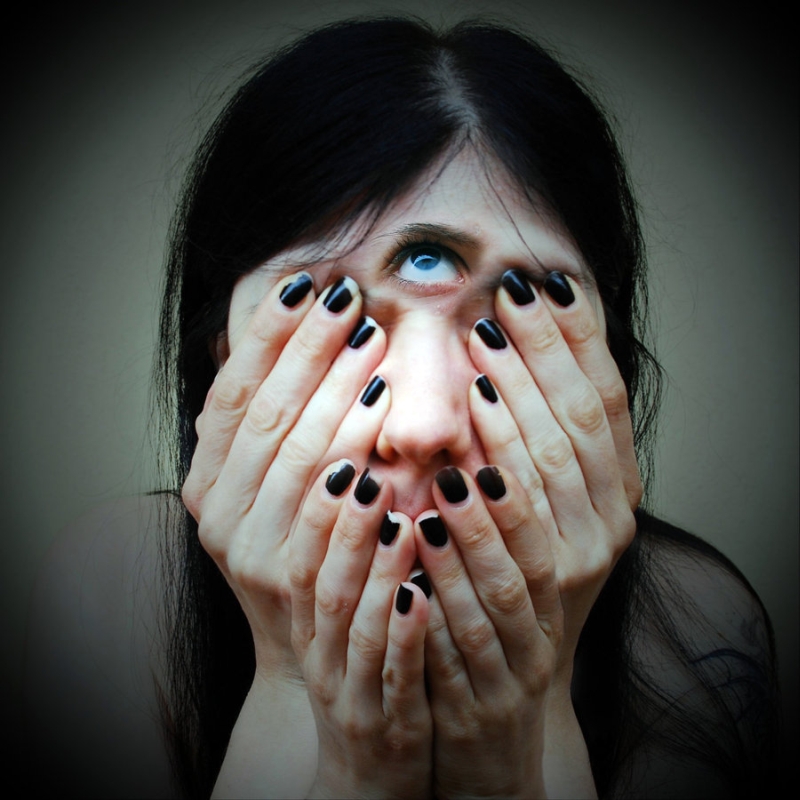

















































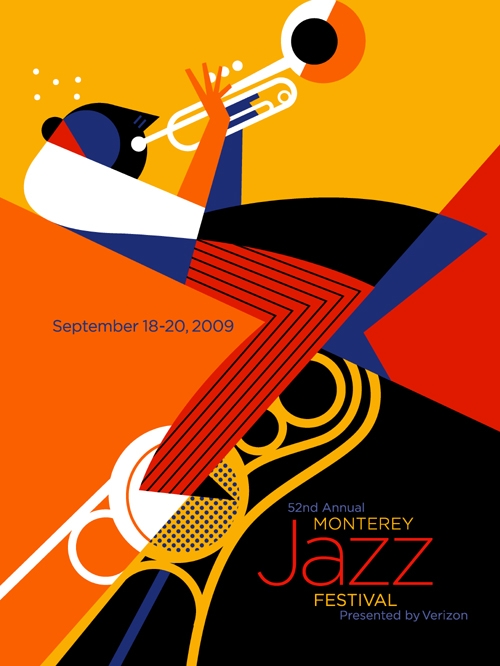































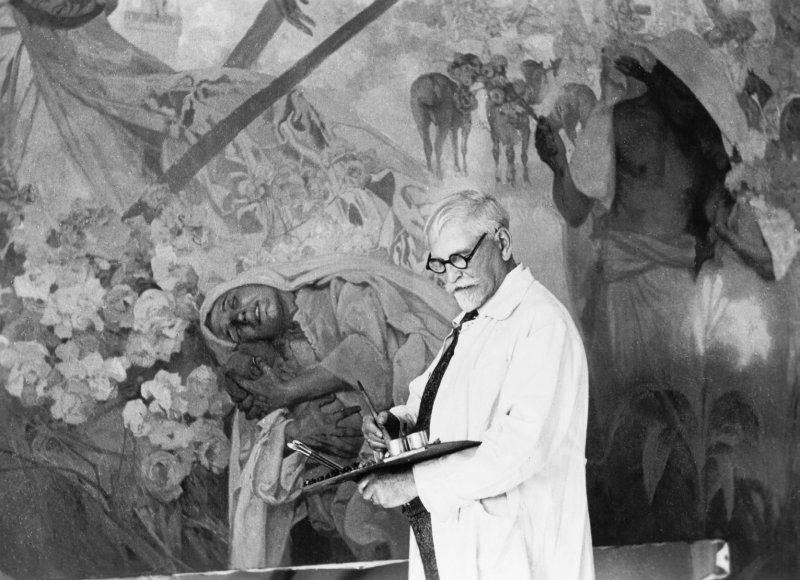
















































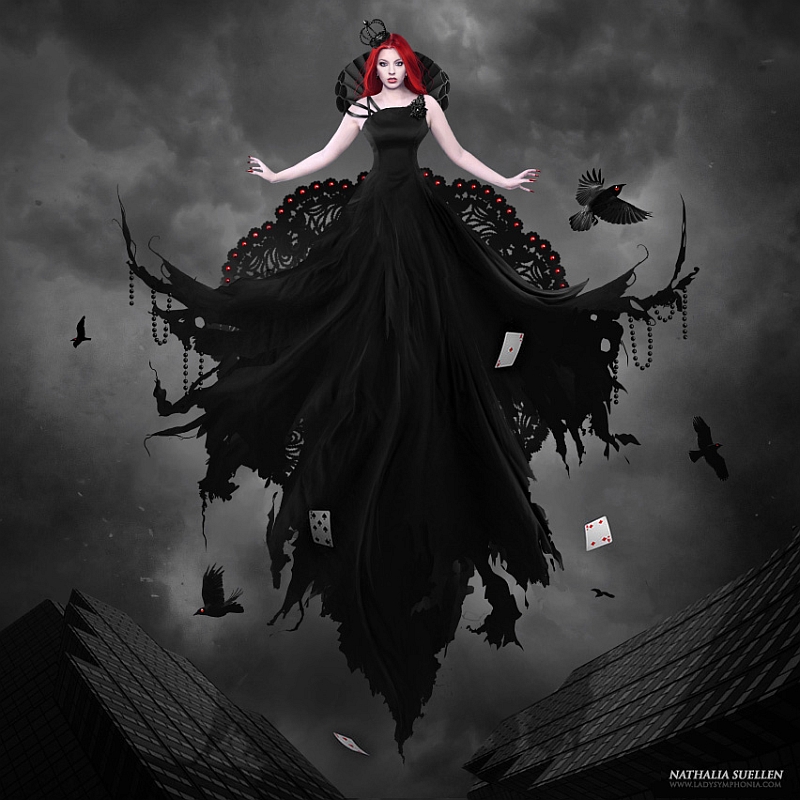
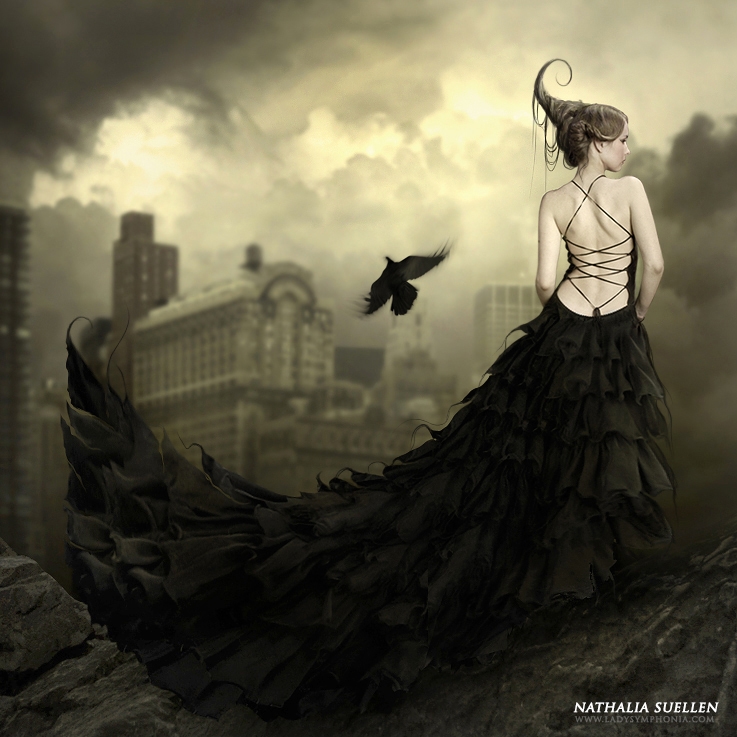







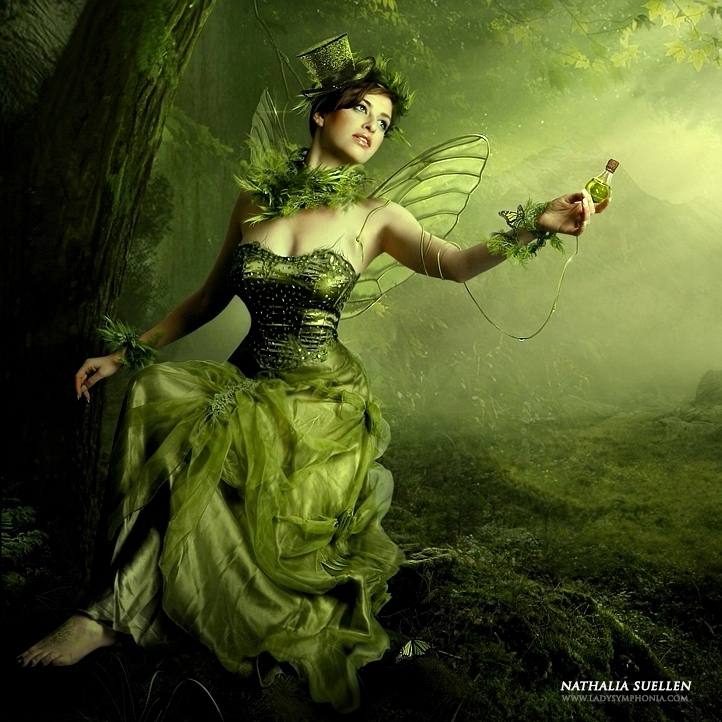























.jpg)



































